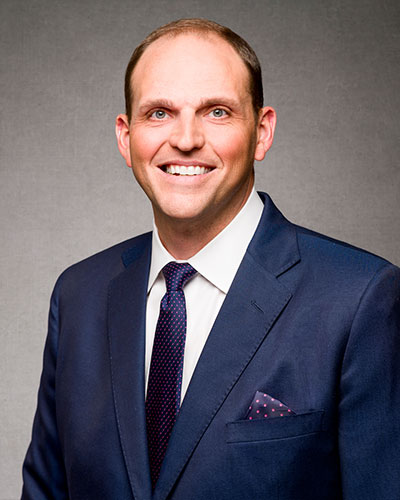Walking is a fundamental mode of transportation for many Georgia residents, whether they are navigating the urban sprawl of Atlanta or enjoying a quiet stroll in a small town. However, pedestrian accidents are a significant concern across the state, leading to severe injuries and fatalities. Understanding the common causes of these accidents and how to avoid them is crucial for both pedestrians and drivers.




Causes of Pedestrian Accidents
One of the primary causes of pedestrian accidents in Georgia is distracted driving. With the advent of smartphones and other electronic devices, drivers are more distracted than ever before. Texting, making phone calls, using GPS, and even adjusting the radio can divert a driver’s attention away from the road. When a driver is not fully focused, the likelihood of not noticing a pedestrian crossing the street increases dramatically. To combat this, drivers must commit to staying focused while behind the wheel, putting away distractions, and always being on the lookout for pedestrians, especially in areas where foot traffic is heavy.
Speeding is another major factor contributing to pedestrian accidents. Speed limits are set for a reason, and exceeding these limits can have catastrophic consequences. When a vehicle is traveling at high speeds, the driver has less time to react to unexpected situations, such as a pedestrian stepping into the crosswalk. Moreover, the impact of a high-speed collision is far more likely to result in severe injury or death. Pedestrians can also protect themselves by being aware of traffic speeds and avoiding crossing streets where cars are traveling at high speeds, even if it means taking a longer route.
Poor visibility plays a significant role in many pedestrian accidents. Georgia’s varied climate means that fog, rain, and even the setting sun can create visibility issues for drivers. Many pedestrian accidents occur at night when it is harder for drivers to see individuals walking along or crossing the road. Wearing bright or reflective clothing can make pedestrians more visible to drivers. Furthermore, both pedestrians and drivers should exercise extra caution in low-visibility conditions, making sure that they are seen — and can see others — on the road.
Another common cause of pedestrian accidents in Georgia is jaywalking. When pedestrians cross the street outside of designated crosswalks or intersections, they put themselves at a higher risk. Drivers are not expecting pedestrians to be in the middle of the block and may not have enough time to stop. It is essential for pedestrians to use crosswalks and obey traffic signals to minimize their risk of being hit by a vehicle. Equally important is for drivers to be vigilant and prepared for the unexpected, even when they are not at an intersection.
Alcohol and drug impairment is a contributing factor in many pedestrian accidents. Both drivers and pedestrians under the influence of alcohol or drugs have impaired judgment and reaction times. This impairment can lead to poor decision-making, such as a driver failing to yield the right of way or a pedestrian stepping into the street without looking. It is crucial for individuals to avoid driving or walking under the influence. Planning for a sober ride or walking with a sober companion can prevent many accidents and save lives.
The design of roads and intersections can also contribute to pedestrian accidents. Some areas may lack adequate sidewalks, crosswalks, or pedestrian signals, making it more dangerous for individuals to walk. Busy intersections without proper pedestrian markings can be confusing and hazardous. Local governments and city planners must prioritize pedestrian safety by creating infrastructure that facilitates safe walking paths and crossings. Pedestrians should familiarize themselves with safer routes and avoid areas with poor pedestrian infrastructure whenever possible.
Vulnerable Populations
Children and the elderly are particularly vulnerable to pedestrian accidents. Children often lack the judgment to navigate traffic safely and may dart into the street without warning. The elderly may have slower reaction times and mobility issues that make crossing streets more challenging. Education and awareness are critical in preventing accidents involving these groups. Teaching children about traffic safety and the importance of using crosswalks can help reduce their risk. Similarly, drivers should exercise additional caution in areas where children and elderly pedestrians are likely to be present, such as near schools and senior centers.
Construction Zones
Construction zones are another hazard for pedestrians. These areas often have changed traffic patterns, reduced lanes, and heavy machinery, creating a confusing and dangerous environment for both drivers and pedestrians. It is vital for construction companies to provide clear signage and safe pathways for pedestrians. Pedestrians should pay close attention to these signs and avoid taking shortcuts through construction areas, even if it means a longer detour.
Weather Complications
Weather conditions can exacerbate the dangers faced by pedestrians. Rain can make roads slippery and reduce a driver’s ability to stop quickly. Ice and snow create treacherous walking conditions, increasing the risk of falls and accidents. Both drivers and pedestrians need to adjust their behaviors according to weather conditions. Drivers should slow down and maintain a greater following distance during inclement weather, while pedestrians should wear appropriate footwear and remain cautious to avoid slips and falls.
Public Awareness
Public awareness and education campaigns can play a significant role in reducing pedestrian accidents. By raising awareness about the dangers and promoting safe practices, communities can work together to protect their residents. Schools, workplaces, and community organizations should all participate in spreading the message about pedestrian safety. Simple actions like looking both ways before crossing, making eye contact with drivers, and not assuming that a vehicle will stop can significantly reduce the risk of accidents.
The Role of Law Enforcement
Enforcement of traffic laws is another essential aspect of preventing pedestrian accidents. Law enforcement agencies must strictly enforce laws against speeding, distracted driving, and driving under the influence. Additionally, pedestrians who jaywalk or disobey traffic signals should also face consequences. A strong enforcement presence can deter reckless behavior from both drivers and pedestrians, making the streets safer for everyone.
The Role of Technology
Innovative technology also holds promise in improving pedestrian safety. Advanced driver-assistance systems (ADAS) in vehicles can detect pedestrians and automatically apply brakes to prevent collisions. Improved street lighting and smart crosswalks that signal when a pedestrian is crossing can enhance visibility and safety. Cities and municipalities should invest in such technologies to create safer urban environments for pedestrians.
Hiring a Personal Injury Attorney How Long Will a Personal Injury Case Take?Related Videos
Educating the Community on Pedestrian Safety
Education and community involvement are critical components in fostering a culture of safety. Schools can incorporate traffic safety into their curriculum, teaching children the importance of being vigilant pedestrians. Community groups can organize safety workshops and events to raise awareness among residents. By creating a culture of safety, communities can significantly reduce the incidence of pedestrian accidents.
Representative Cases
Protecting Pedestrians’ Rights
Pedestrian accidents in Georgia are a multifaceted issue that requires a comprehensive approach to address effectively. Distracted driving, speeding, poor visibility, jaywalking, alcohol and drug impairment, inadequate road design, and vulnerable populations all contribute to the problem. By fostering awareness, enhancing education, improving infrastructure, and enforcing traffic laws, we can create a safer environment for pedestrians.
At Princenthal, May & Wilson, LLC, we are dedicated to advocating for pedestrian safety and supporting victims of accidents. If you or a loved one has been involved in a pedestrian accident, do not hesitate to contact us for legal assistance. Together, we can work towards a safer Georgia for all.





